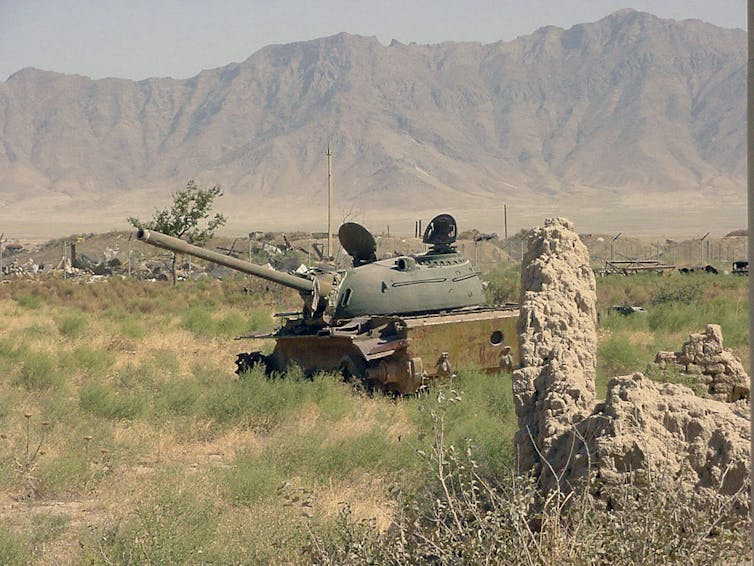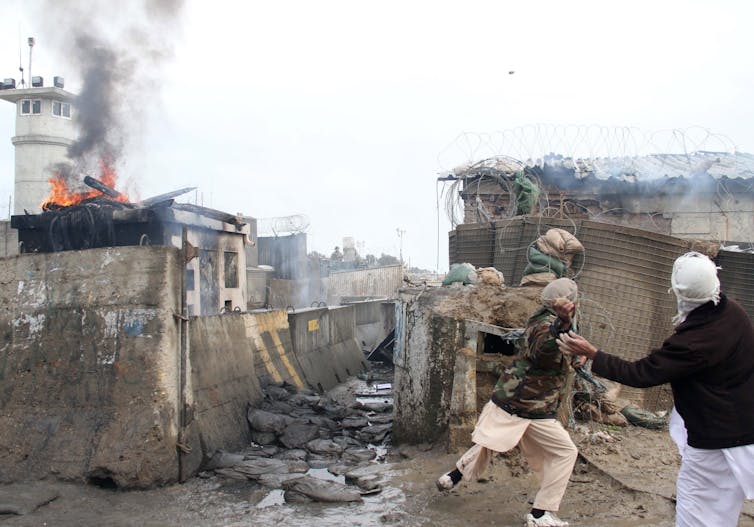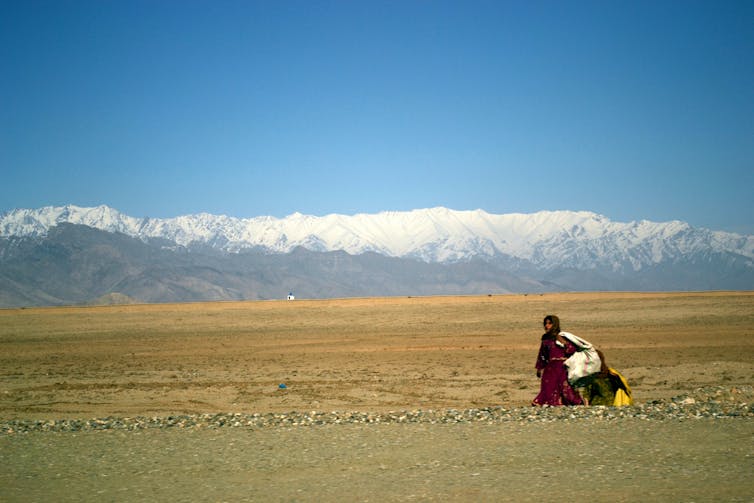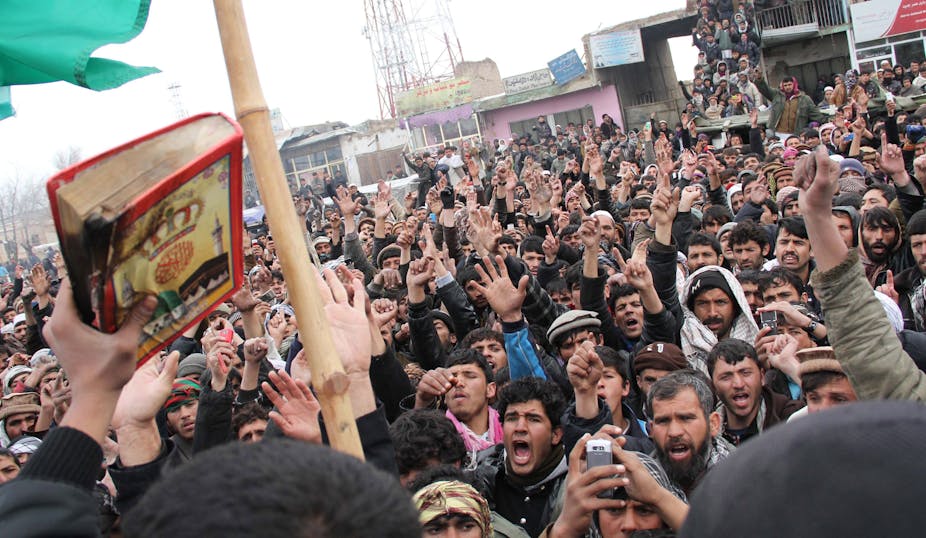The only thing surprising about yesterday’s riots outside of Afghanistan’s Bagram air base is that these things don’t happen more often.
What is fascinating about Afghanistan is how its infrastructural capacities – hardware, pools of unskilled labour, airports, marketplaces – add to the country’s tacit support for each new game-player on its territory: be it Britain, Soviet Russia, the US or the Taliban.
These are the unaligned skilled economies that develop around wars; economies that up until now have seemingly shifted from side to side irrespective of outcome and eventual master.
But with each shift, tensions between the local population and occupying forces inevitably arise. This time, residents were furious over reports US troops had burned a Qur'an in the air base.
Bagram and the base
The village of Bagram sits the main entry gate to the the airfield, on the road that runs to Kabul. In 2001, this village had a population of approximately 5000 people. Today it would be significantly larger, in line with the radical expansion of the airfield under U.S administration post-surge.
View Bagram riots in a larger map
The mechanics of war
Bagram airbase was built by the Soviets as early as the 1960s and was used throughout their occupation from 1979 to 1989. Contested by the Taliban and Northern Alliance throughout the civil war era, the air-traffic control tower reportedly served as a media-briefing site by a Northern Alliance general.
The airfield is now one of the key military installations for the US, housing civilian and military medical facilities as well as the notorious Bagram prison with its 750 mostly Taliban inmates. Around 30 other prisoners, many with Al-Qaeda links, were brought to Afghanistan from outside the country. Bagram airfield sits along side Guantanamo Bay and Abu Ghraib prison on an international itinerary of questionable US correctional facilities.

Under US administration, the airfield has been expanding since 2001 leveraging off of its Soviet-built core. It is now a 2,100-hectare compound that includes shops, restaurants, three kilometres of aircraft runway, offices and barracks.
It is a key component of the 16,093km aerobridge that runs between Afghanistan and the US mainland: from the concrete runways of Charleston Air Force Base, South Carolina, to the airfields of Bagram, Kandahar and Shin, this aerobridge has operated as part of the latest surge. More than 30,000 troops and up to 60,000 tonnes of cargo and supplies have been moved via the only secure route between these two places – direct flight.
Hardware fetishists might like to note that up to 20 times a day, C-5A Galaxies and C-17 aircraft, each able to carry the equivalent contents of four 18-wheeled trucks, fly between the US mainland and these Soviet-built air bases of southern and central Afghanistan.
Shifting allegiances
The aircraft used to resupply the growing US military presence in Afghanistan in the later months of 2001 were commercial Russian-made IL76s and AN12s, manned by crew from the ex-Soviet Union working for civilian supply companies contracted to the US military.
These aircraft and the individuals crewing them gained direct and invaluable knowledge of Afghanistan via involvement in the preceding Soviet occupation of the late 1970s and 1980s, a conflict, which involved a CIA-backed Mujahideen, galvanised against the Russians.

In 2001, these planes operated from the United Arab Emirates, the key transport hub for US and European airfreight. The IL76, with its internal crane and capacity to drop a six-metre container directly onto a runway, thereby doing away with ground support, was ideal for the job in Afghanistan. And critically, in the early days of U.S and allied invasion, to have a non-US flagged aircraft go down was not newsworthy to a voracious media focused on US losses for an anxious public back home, unlike the loss of an American-registered plane.
Whose side are you on?
Servicing both the airfield and the village of Bagram is a market. Just as the unaligned skilled economies of invasion logistics shift from side to side irrespective of master. The base bleeds information with a porosity that challenges traditional notions of “taking sides”.

In this market it is possible to buy almost anything that is available on the base: electrical goods, furniture, food, sporting equipment. How it gets there no one seems to know, or be prepared to tell. There are reports that at certain times it has even been possible to buy bags of USB sticks containing random information regarding life and the workings of the military at the base.
It is unclear from the reports as to whether these USB sticks were stolen or thrown out with information already in place, or if they were smuggled in and used as repositories for information downloaded. Either way, the social security details of all four of the highest-ranking officers on the base have to be worth something to someone.
So much of our attention is directed towards both US and Australian troops in Afghanistan that we forget about the communities of Afghans that support, or at least surround, the foreign presence there.
But as the population finds its voice over issues such as Qu'ran burning, it may not be so easy to ignore.

